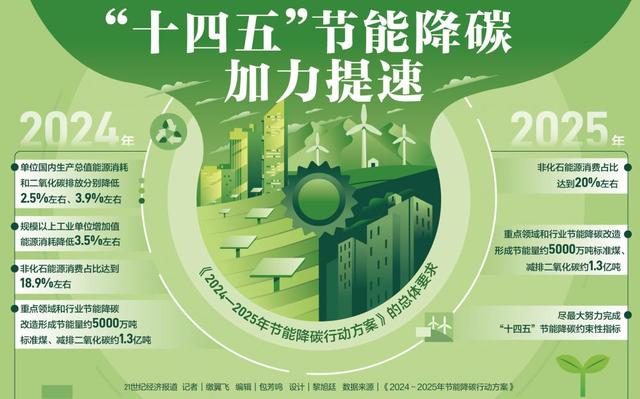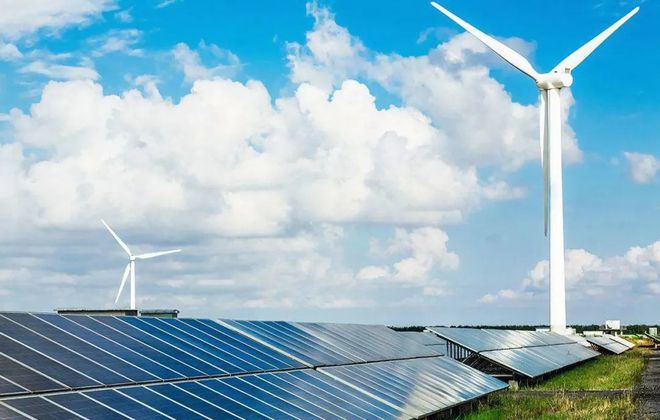国务院关于印发《2024—2025年节能降碳行动方案》的通知
风力和太阳能发电出现“结构性”转折
风力和太阳能发电出现“结构性”转折
德国瑙恩附近上个月建成的太阳能板电场。德国制定了野心勃勃的可再生能源发电目标,根据弗劳恩霍费尔研究所发布的统计,太阳能、风能、水与生物质资源占德
德国瑙恩附近上个月建成的太阳能板电场。德国制定了野心勃勃的可再生能源发电目标,根据弗劳恩霍费尔研究所发布的统计,太阳能、风能、水与生物质资源占德国2015年上半年国家总发电量的34%。(Photo by Sean Gallup/Getty Images)
美国专栏作家克里斯·穆尼(Chris Mooney)10月6日在《美国华盛顿邮报》上发表评论说[1],风电和太阳能发电越来越便宜。还有人说出现了“结构性”转折。彭博社新能源财经(BNEF)的新分析暗示[2],我们不断深入的世界,太阳能或风力发电有更大的经济意义,而不是化石燃料。这是否意味着世界提前进入“太阳能”时代?
BNEF的报告检查了2015年上半年全世界的“平准化电力成本”(LCOE)。它就是个旨在探索全面看待成本的“量度”,包括基建开支、利息和运行成本。按BNEF欧洲、中东和非洲分析主管赛博亨贝斯特(Seb Henbest)的说法,它就是一种“方法”,能够“把技术放在公平竞争的环境,比较它的价值”。
这个报告的根据是全世界大约55000个项目的分析。而且发现从整体上看,目前陆上风电每千度电(MWh)的平均成本$83(比上半年便宜2美元),薄膜太阳能光伏每MWh的成本$122,仅在半年内就下降了7美元。
这就越来越好与化石燃料比较了——虽然仍然非常依赖于所处的位置。该报告发现,美国燃煤的电力成本平均$75 /MWh,欧洲$105/MWh。美国燃气发电成本平均$82/MWh,欧洲$118/MWh。
不同区域成本的差异反映各种因素有很大变化,从开放市场上燃料成本自身到碳价格的各种设想。但“关键语”没有搞错。
亨贝斯特说,“在美国和全世界许多地方,陆上风电目前可与煤炭和天然气燃料发电技术竞争”。太阳能通常价格仍然偏高,但也在快速下跌。
这个报告实际上发现英国和德国,风电目前大大低于化石燃料发电。两个国家的风电平均成本分别是$85和$80/MWh,而煤炭和天然气风电的平均成本超过$100/MWh。
相比之下,在中国,燃煤发电仍然极其便宜——只有$44/MWh。风电的成本是$77/MWh,而太阳能光伏为$109/MWh。
美国“处于”中国与英国和德国之间的某个值——风电平均成本约为$80/MWh,太阳能发电为$107/MWh。相反地,煤炭和天然气燃料发电的平均成本是$65/MWh.
但是,模式正在改变。而且如亨贝斯特所说,一旦有更多可再生能源上网,就可能实际上有个“暗中破坏”化石燃料利用的过程。因为可再生能源装置运行不需要任何燃料,没有反复出现的燃料“成本”,是“良性”循环。所以,可再生能源的报价可低于上网供电成本,而且供电越多,意味着化石燃料电厂运行的机会越少……
亨贝斯特说,“你从可再生能源很昂贵的世界开始,走入一个可再生能源实际上很便宜的世界。这是非常有意义的。”
但是,某些可再生能源仍然很昂贵。海洋和潮汐发电二者的成本超过$400/MWh,但附设的近海风电则有更多希望大力扩张,最初为$174/MWh,暗示还有一段路要走。亨贝斯特说,“因为把这种技术延伸到海上,而且仍然处于早期阶段,所以很昂贵。我们预期各项开支能降下来。”
BNEF指出,核电与煤炭和天然气相似,在世界不同地区,LCOE不同。但在美国、欧洲,中东和非洲地区,核电的LCOE上升到$261-158/MWh。而且除中国外,投入运行的新机组很少。
当天,至少一个环保团体的负责人通报了彭博社新能源财经的分析。塞拉俱乐部(Sierra Club)[3]的执行理事迈克尔布伦(Michael Brune)在一声明中说,“风能和太阳能等清洁能源解决方案变得更便宜和更容易获得,意味着它们正在日益成为全美国电力公司和其他电力生产者最聪明的长期金融投资。”“向清洁能源经济过渡正在全速前进,并把危险、肮脏的化石燃料推后到排尾。”
在清洁能源发展潮流中,核电成本“逆势而动”,不是好新闻。即使中国核电的发展,目前也很“纠结”,看不出即将进入核能“新能源”时代的迹象,值得在“走出去”的道路上审视。当世界准备11-12月法国巴黎联合国会议,寻求达成一项新的全球气候协议时,既要给经济发达国家“锦上添花”,更要给发展中国家“雪中送炭”。中国早就在以惊人的速度发展太阳能,已是全球最大的风能生产国[4],提供、建设风能和太阳能发电设施是中国人的“长项”。多给发展中国家提供这种帮助或援助,更简单、安全、实在,更得人心。
参考资料与注释:
1. Chris Mooney,Wind and solar keep getting cheaper and cheaper,WaPo,October 6 2015
2. Ethan Zindler,WIND AND SOLAR BOOST COST-COMPETITIVENESS VERSUS FOSSIL FUELS,Bloomberg New Energy Finance,6 OCTOBER 2015
3. 塞拉俱乐部是美国的一个环保组织,著名的环保主义者约翰·缪尔(John Muir)于1892年5月28日在加利福尼亚州旧金山创办了该组织,并成为其首任会长。塞拉俱乐部拥有百万会员,分会遍布美国,且与加拿大塞拉俱乐部(Sierra Club Canada)有紧密的联系。
4. 电缆网,外媒:中国成全球可再生能源最大投资者,2015-10-14。
附:BNEF研究报告发布新闻稿(原文)
London and New York, 6 October 2015 – This year has brought a significant shift in the generating cost comparison between renewable energy and fossil fuels, according to detailed analysis by technology and region, published this week by Bloomberg New Energy Finance.
The research companys Levelised Cost of Electricity Update for the second half of 2015, based on thousands of data points related to individual deals and projects around the world, shows that onshore wind and crystalline silicon photovoltaics – the two most widespread renewable technologies – have both reduced costs this year, while costs have gone up for gas-fired and coal-fired generation.
The BNEF study shows that the global average levelised cost of electricity, or LCOE, for onshore wind nudged downwards from $85 per megawatt-hour in the first half of the year, to $83 in H2, while that for crystalline silicon PV solar fell from $129 to $122.
In the same period, the LCOE for coal-fired generation increased from $66 per MWh to $75 in the Americas, from $68 to $73 in Asia-Pacific, and from $82 to $105 in Europe. The LCOE for combined-cycle gas turbine generation rose from $76 to $82 in the Americas, from $85 to $93 in Asia-Pacific and from $103 to $118 in EMEA.
Seb Henbest, head of Europe, Middle East and Africa at Bloomberg New Energy Finance, commented: "Our report shows wind and solar power continuing to get cheaper in 2015, helped by cheaper technology but also by lower finance costs. Meanwhile, coal and gas have got more expensive on the back of lower utilisation rates, and in Europe, higher carbon price assumptions following passage of the Market Stability Reserve reform."
Levelised costs take into account not just the cost of generating a marginal MWh of electricity, but also the upfront capital and development expense, the cost of equity and debt finance, and operating and maintenance fees.
Among other low-carbon energy technologies, offshore wind reduced its global average LCOE from $176 per MWh, to $174, but still remains significantly more expensive than wind, solar PV, coal or gas, while biomass incineration saw its levelised cost stay steady at $134 per MWh. Nuclear, like coal and gas, has very different LCOE levels from one region of the world to another, but both the Americas and the Europe, Middle East and Africa region saw increases in levelised costs, to $261 and $158 per MWh respectively.
Among the country-level findings of the BNEF study are that onshore wind is now fully cost-competitive with both gas-fired and coal-fired generation, once carbon costs are taken into account, in the UK and Germany. In the UK, onshore wind comes in on average at $85 per MWh in the second half of 2015, compared to $115 for combined-cycle gas and $115 for coal-fired power; in Germany, onshore wind is at $80, compared to $118 for gas and $106 for coal.
In China, onshore wind is cheaper than gas-fired power, at $77 per MWh versus $113, but it is much more expensive still than coal-generated electricity, at $44, while solar PV power is at $109. In the US, coal and gas are still cheaper, at $65 per MWh, against onshore wind at $80 and PV at $107.
Luke Mills, analyst, energy economics at Bloomberg New Energy Finance, said: "Generating costs continue to vary greatly from region to region, reflecting influences such as the shale gas boom in the US, changing utilisation rates in areas of high renewables penetration, the shortage of local gas production in East Asia, carbon prices in Europe, differing regulations on nuclear power across the world, and contrasting resources for solar generation.
"But onshore wind and solar PV are both now much more competitive against the established generation technologies than would have seemed possible only five or 10 years ago."
上一篇:英国光伏:坚守还是离开


